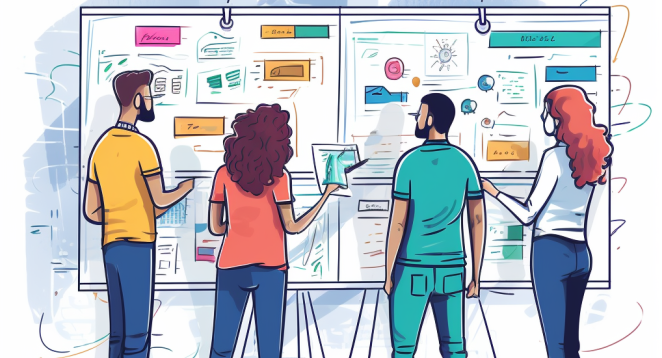In the competitive landscape of modern business, truly understanding your customers is the key to sustainable success. Market segmentation models provide the framework for this crucial insight, allowing companies to tailor their offerings, messaging, and strategies to resonate with specific customer groups. However, with a multitude of models available, selecting the right approach can be daunting. This comprehensive guide explores the most effective market segmentation models, their practical applications, and how to leverage them for maximum impact in 2024 and beyond.
The Power of Market Segmentation: Driving Business Growth
Market segmentation is the process of dividing a broad customer base into distinct groups that share similar characteristics, needs, or behaviors. This strategic approach offers numerous benefits:
- Targeted Marketing: Craft messages that speak directly to the unique needs and preferences of each segment, dramatically increasing campaign effectiveness.
- Product Development: Focus on creating solutions that address the specific pain points and desires of your most valuable customer groups.
- Pricing Optimization: Develop pricing strategies that align with the perceived value and willingness to pay within different segments.
- Enhanced Customer Experience: Tailor your offerings and interactions to create a more personalized, engaging experience for each customer group.
- Competitive Advantage: Identify underserved niches or segments where your company can excel, setting you apart from competitors.

Decoding the Segmentation Toolbox: A Deep Dive into Key Models
1. Demographic Segmentation
Core Factors: Age, income, gender, education, occupation, family size, ethnicity
Strengths:
- Easy to implement with readily available data
- Provides a clear, basic understanding of customer groups
- Useful for initial market analysis and broad targeting
Weaknesses:
- Limited insight into customer motivations and behaviors
- This can lead to oversimplification and stereotyping
Best For:
- B2C companies with mass-market products
- Initial market research and audience definition
Real-World Application: A financial services company might use demographic segmentation to tailor retirement planning products for different age groups and income levels. For instance, they could offer high-risk, high-reward investment options to younger professionals, while focusing on stable, income-generating products for retirees.
2. Geographic Segmentation
Key Elements: Country, region, city, climate, population density, cultural differences
Strengths:
- Reveals regional preferences and buying patterns
- Enables localized marketing and distribution strategies
- Useful for businesses with physical locations or region-specific products
Weaknesses:
- Doesn’t account for individual differences within a location
- May overlook important non-geographic factors
Best For:
- Retail chains planning expansion
- Companies entering new markets
- Businesses with products affected by climate or regional culture
Real-World Application: A global fast-food chain might use geographic segmentation to adapt its menu offerings. In India, they might focus on vegetarian options, while in coastal regions, they could emphasize seafood-based items.

3. Behavioral Segmentation
Focus Areas: Purchase history, brand interactions, loyalty program data, product usage, decision-making patterns
Strengths:
- Provides actionable insights based on actual customer actions
- Enables highly personalized marketing and product recommendations
- Useful for predicting future behavior and identifying high-value customers
Weaknesses:
- Requires robust data collection and analysis capabilities
- May not capture the underlying motivations for behaviors
Best For:
- E-commerce companies
- Subscription-based services
- Businesses with loyalty programs
Real-World Application: A streaming service might use behavioral segmentation to analyze viewing habits and create personalized content recommendations. They could also identify users at risk of canceling their subscriptions based on decreased engagement and target them with retention campaigns.
4. Psychographic Segmentation
Key Factors: Lifestyle, values, interests, opinions, personality traits, social class
Strengths:
- Reveals the “why” behind customer decisions
- Enables emotionally resonant marketing messages
- Useful for building strong brand connections
Weaknesses:
- Data collection can be challenging and subjective
- Requires in-depth customer research
Best For:
- Luxury brands
- Lifestyle products
- Cause-driven organizations
Real-World Application: An eco-friendly clothing brand might use psychographic segmentation to identify customers who prioritize sustainability. They could then create marketing campaigns that emphasize their environmentally responsible practices and ethical sourcing, appealing to these customers’ values.

5. Needs-Based Segmentation
Core Focus: Customer problems, desired outcomes, job-to-be-done
Strengths:
- Highly actionable for product development and innovation
- Focuses on solving real customer pain points
- Enables the creation of strong value propositions
Weaknesses:
- Requires extensive customer research and analysis
- May overlook important demographic or behavioral factors
Best For:
- B2B companies
- SaaS providers
- Companies in rapidly evolving markets
Real-World Application: A project management software company might use needs-based segmentation to identify different user groups, such as small business owners, enterprise project managers, and freelancers. They could then develop tailored features and pricing tiers to address the specific challenges faced by each group.
The Future of Segmentation: Hybrid Models and AI-Driven Insights
As technology advances, the most effective segmentation strategies are increasingly combining multiple models to create a more holistic view of the customer. These hybrid approaches leverage the strengths of different segmentation types while mitigating their weaknesses.
Artificial intelligence and machine learning are revolutionizing market segmentation by:
- Analyzing vast amounts of data in real-time
- Identifying complex patterns and correlations
- Enabling dynamic, adaptive segmentation
- Predicting future customer behavior with greater accuracy

Implementing Effective Segmentation: Key Considerations
To maximize the impact of your market segmentation efforts:
- Align with Business Goals: Ensure your segmentation strategy supports your overall marketing and sales objectives.
- Prioritize Data Quality: Invest in robust data collection and management systems to ensure accurate, up-to-date customer information.
- Focus on Actionable Insights: Choose segmentation models that provide clear, implementable strategies for each identified segment.
- Embrace Flexibility: Develop a segmentation approach that can evolve with changing market conditions and customer behaviors.
- Integrate Across Departments: Ensure your segmentation insights are shared and utilized across marketing, sales, product development, and customer service teams.
- Measure and Refine: Continuously evaluate the effectiveness of your segmentation strategy and make data-driven adjustments.
By carefully selecting and implementing the right market segmentation models, businesses can gain a deeper understanding of their customers, driving growth, loyalty, and long-term success. As the business landscape continues to evolve, those who master the art of customer segmentation will be well-positioned to thrive in an increasingly competitive marketplace.

For companies looking to take their segmentation strategies to the next level, working with experienced Pitch Deck Design Consultants can help translate complex customer insights into compelling visual presentations that drive stakeholder buy-in and guide strategic decision-making.



